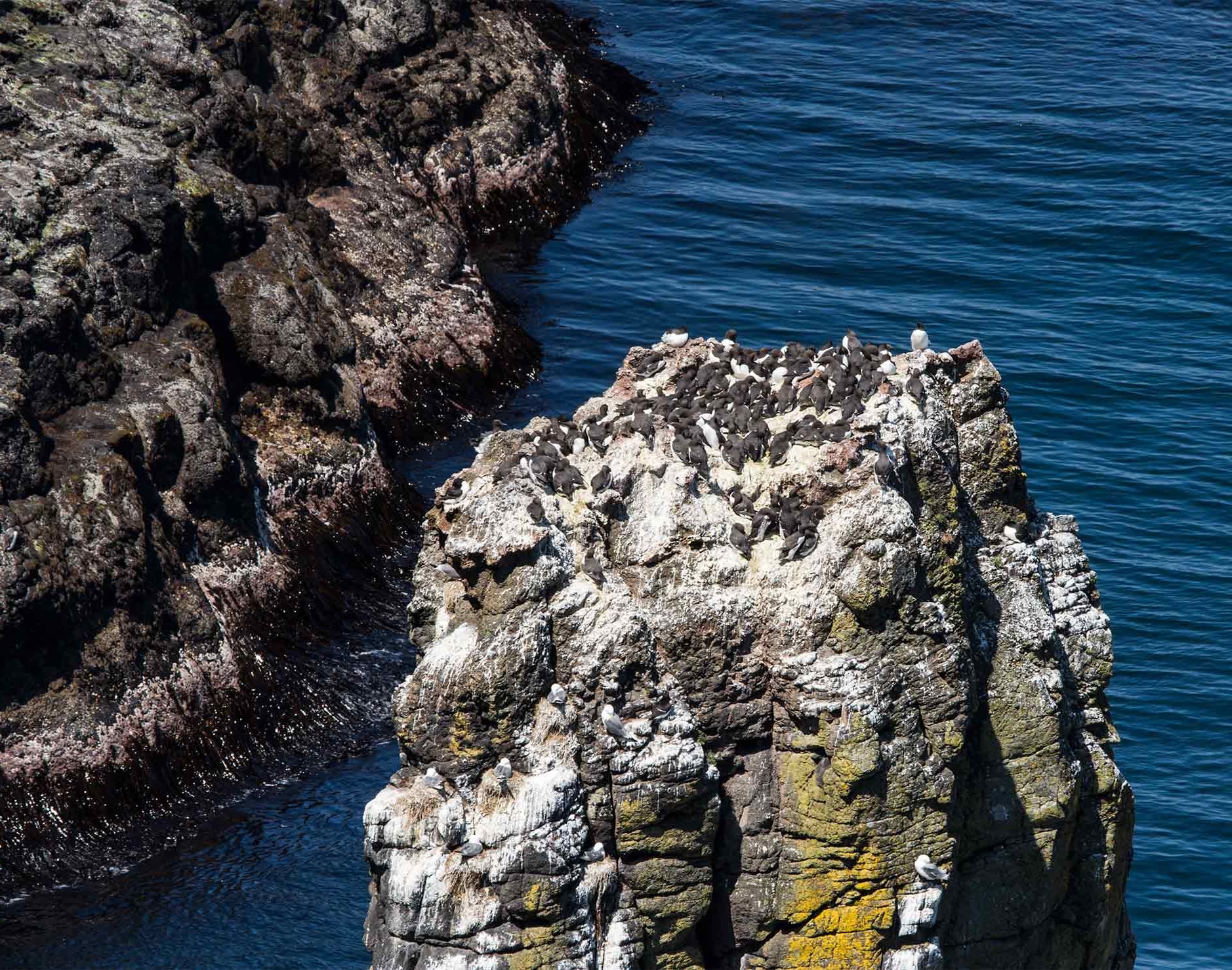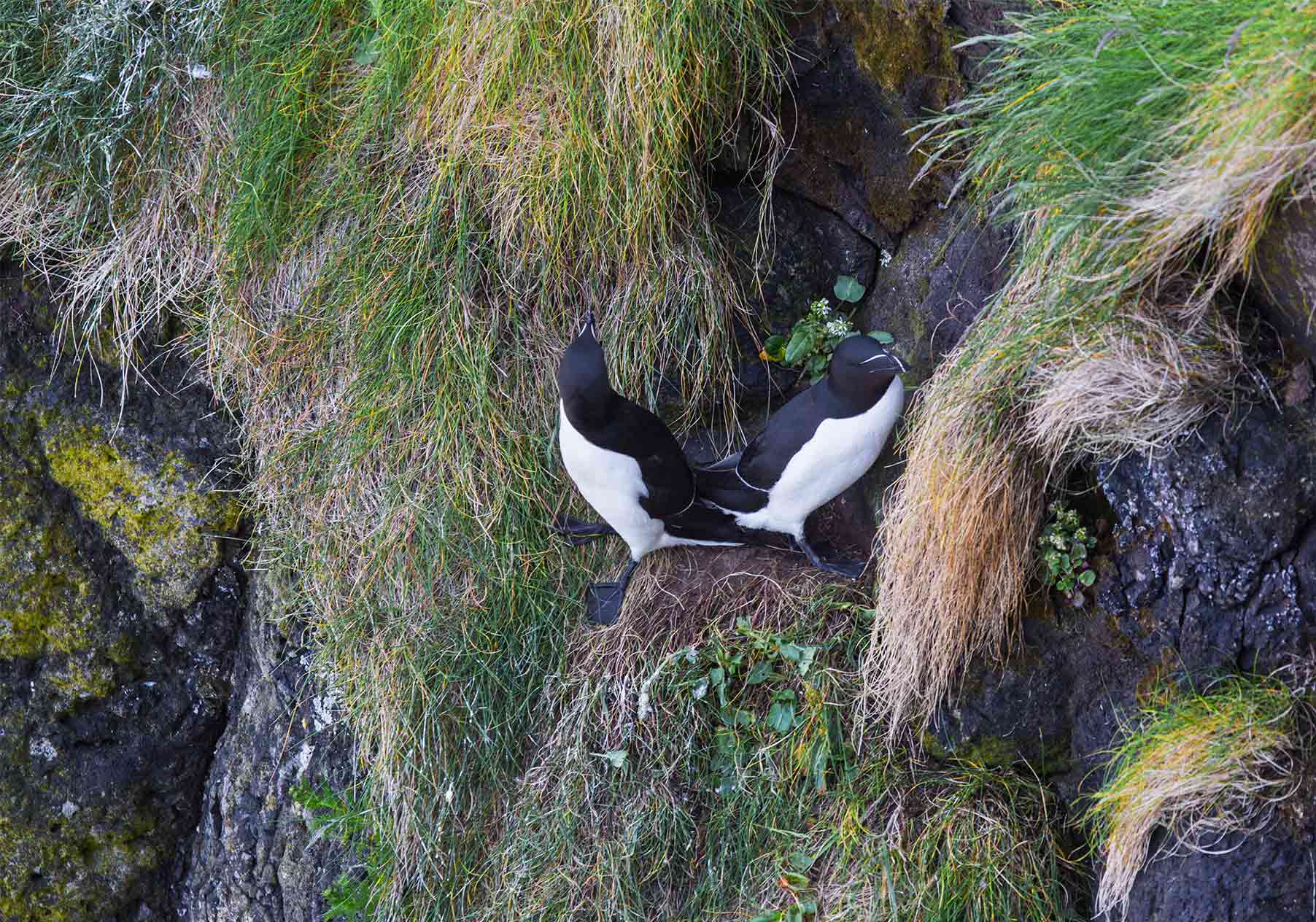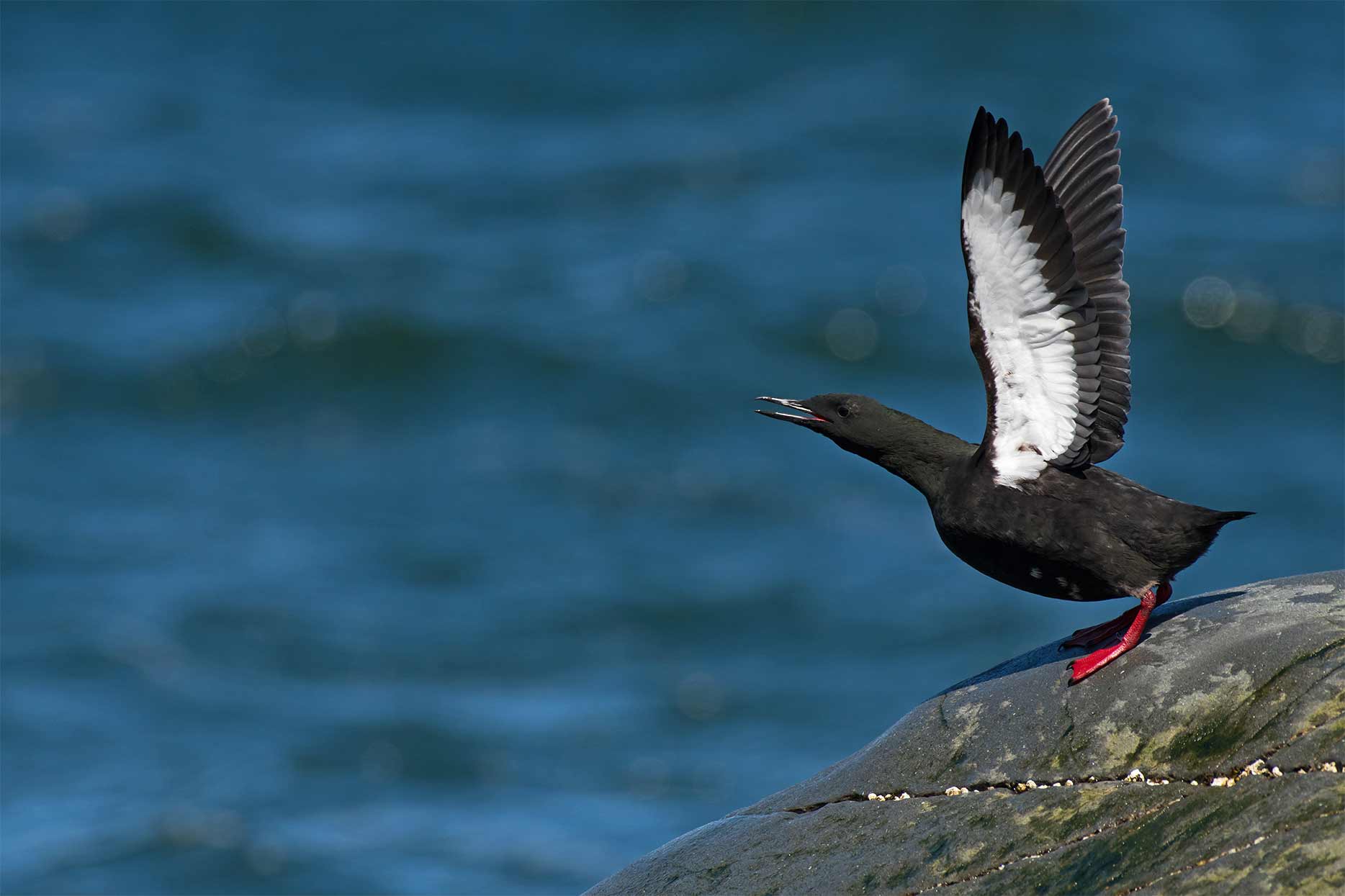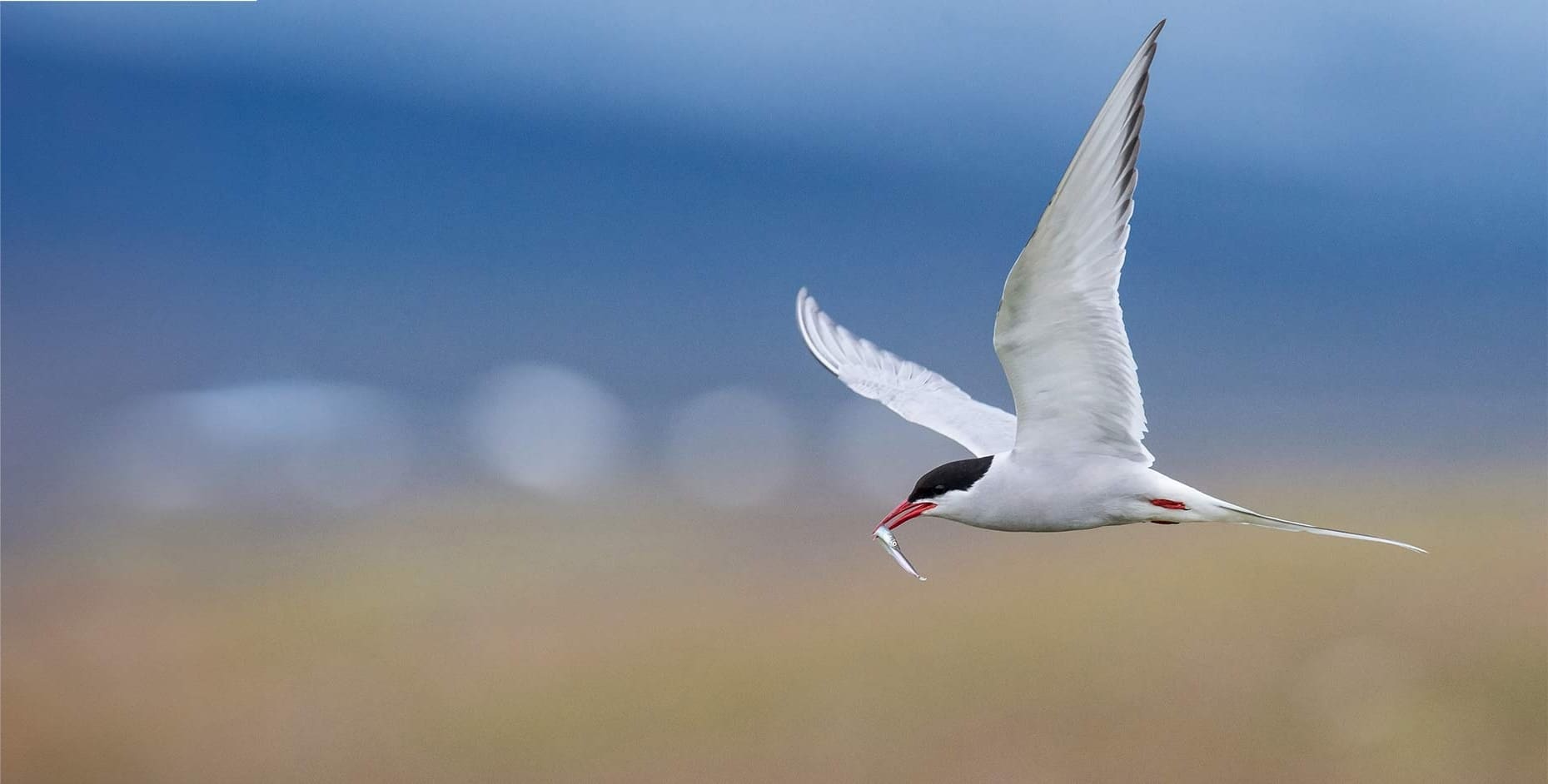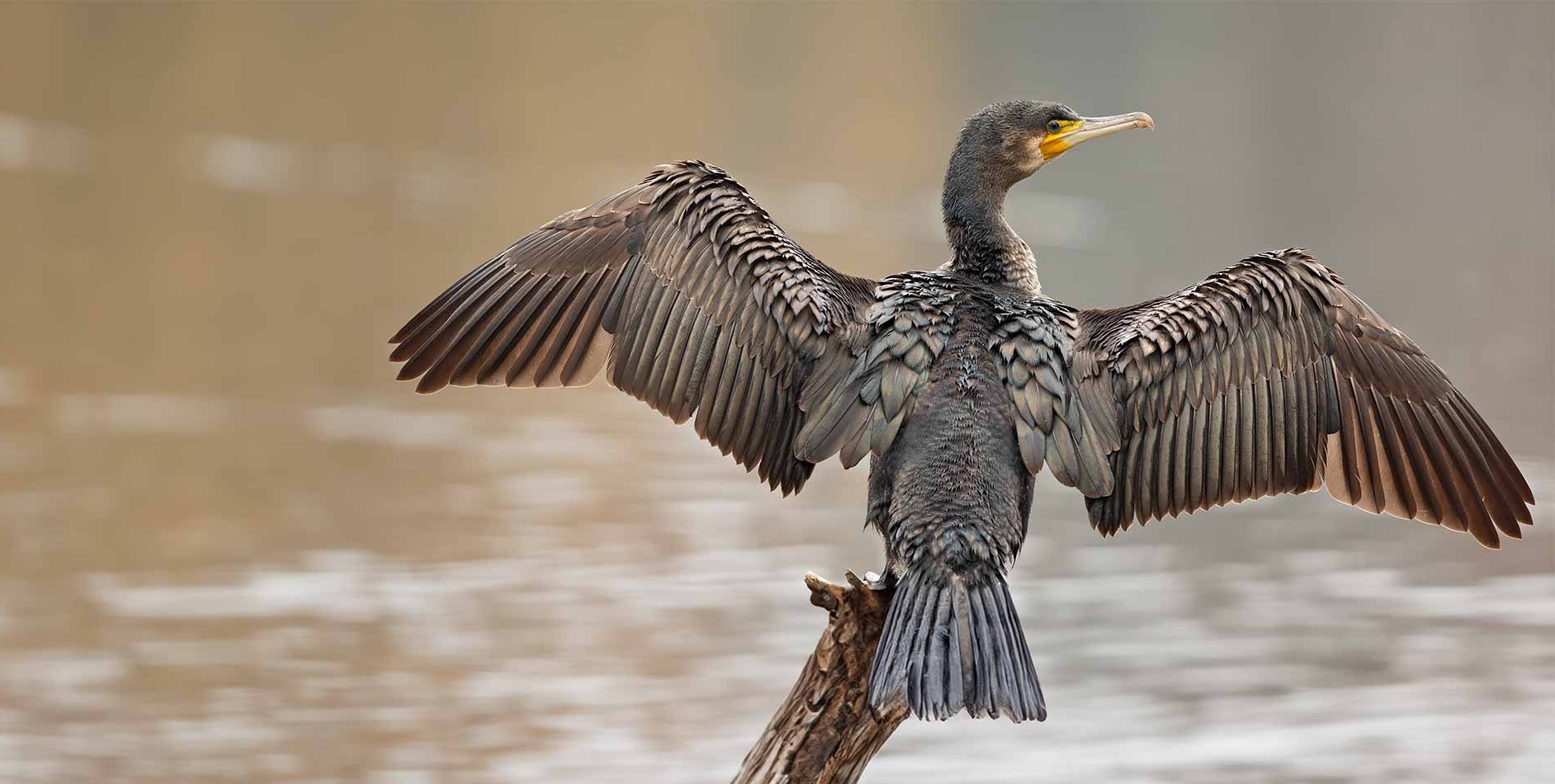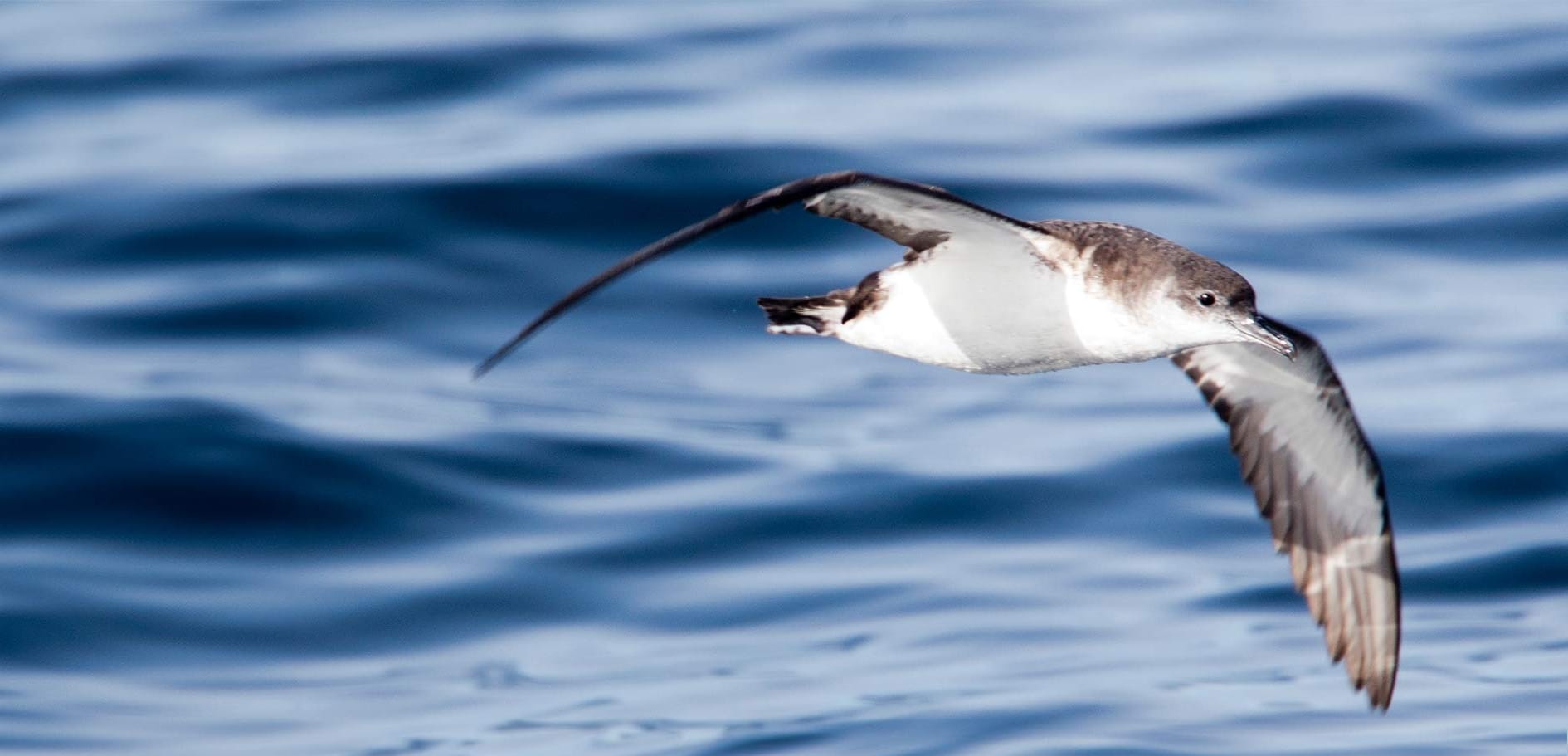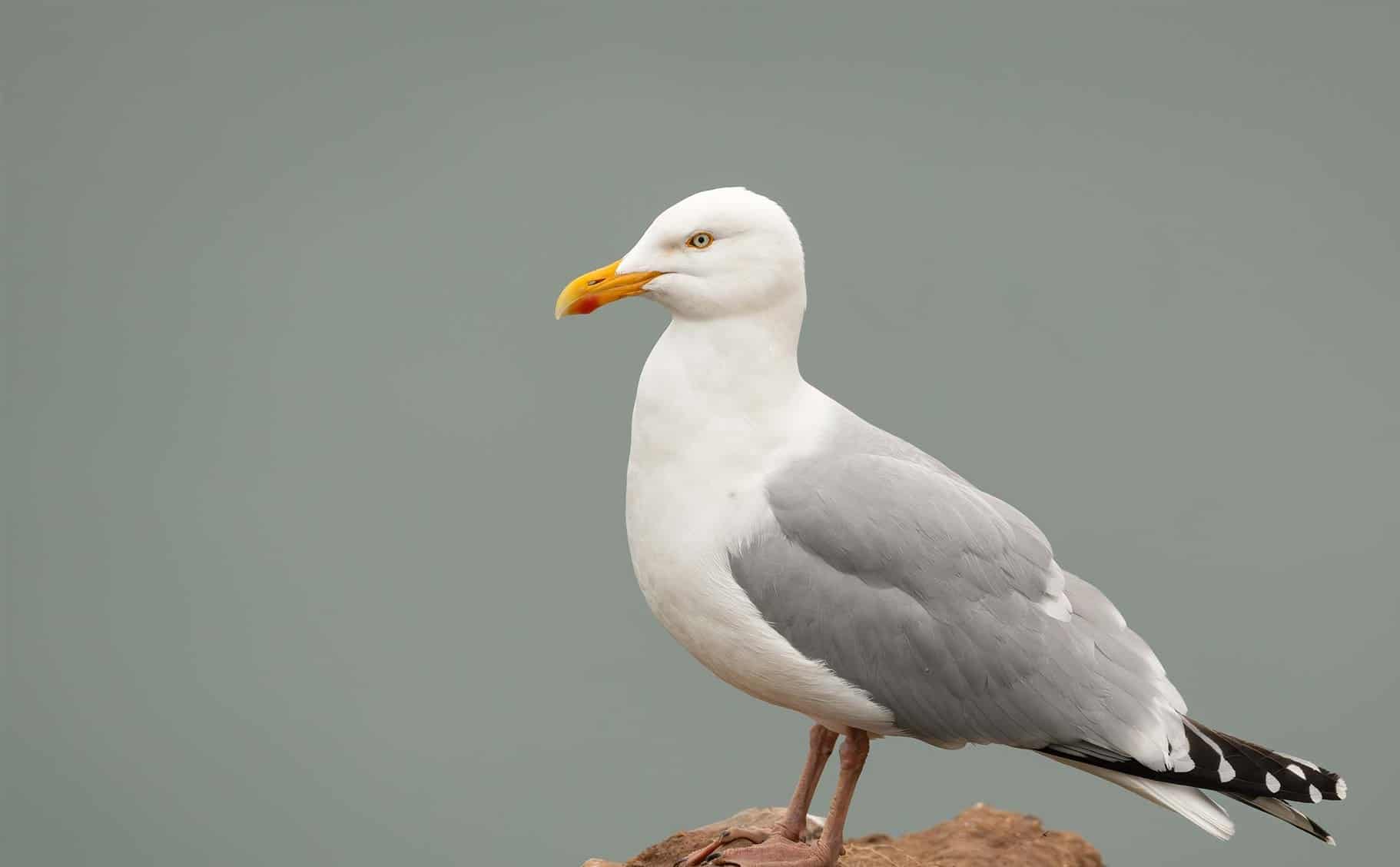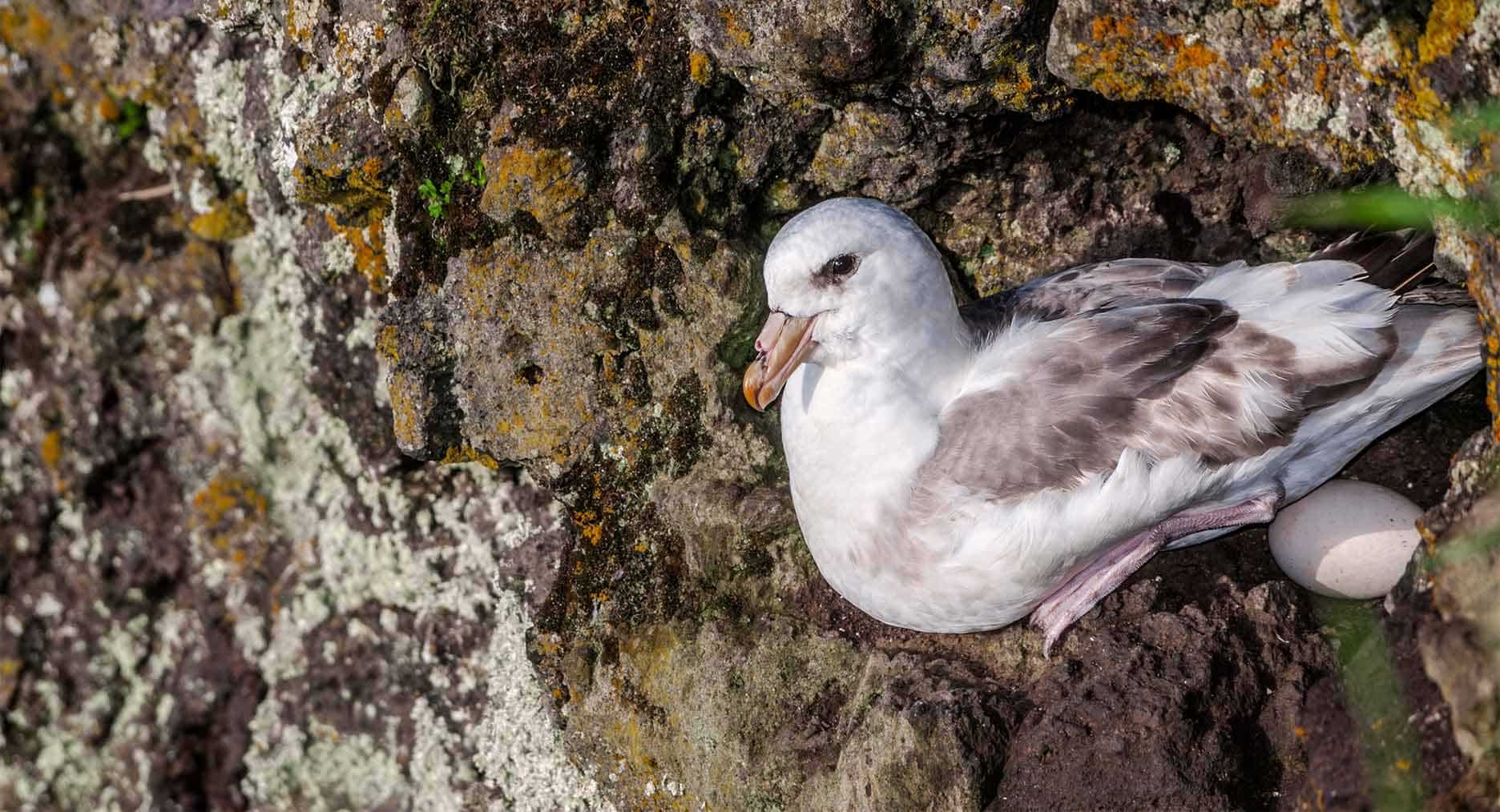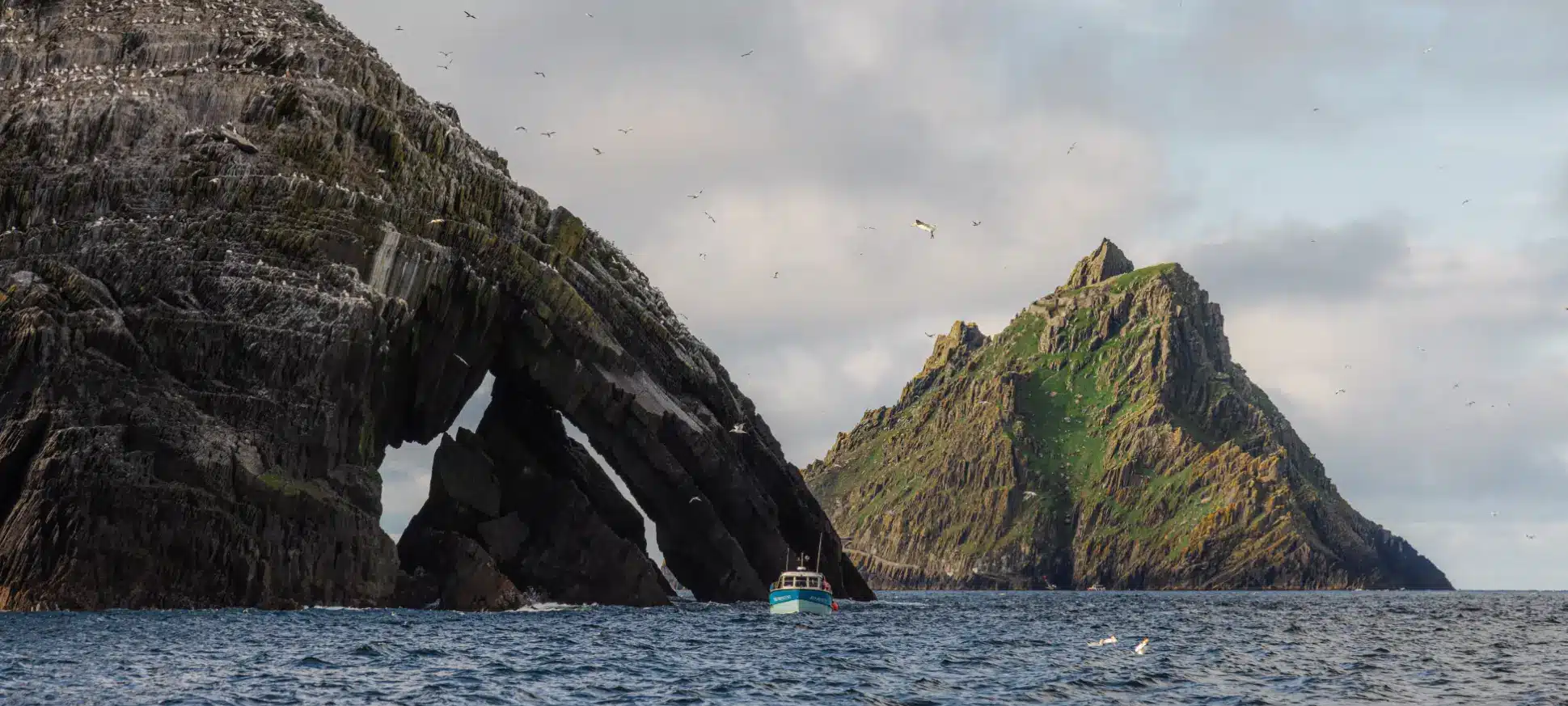
Birds on Skellig Michael
Wildlife on Skellig Michael
There is an incredible wealth of birdlife on and around Skellig Michael and little Skelligs. The puffins arrive on the island in late spring and gannets start to arrive on the small Skelligs in March. By April, they have covered every available ledge on the island.

Puffins
The Puffin’s scientific name is Fratercula arctica. These birds are also called “sea parrots” or “clowns of the sea”. The puffin can be recognized by white underparts and a black back as well as black head with a flattened and bright bill and big pale cheeks. The puffin is known for its orange legs, beautiful red and black eye-markings, and playful character, which give the bird a comical appearance. Puffins are instantly recognizable and loved by people from all around the world.

You can recognize the gannet by its black and white color, yellow head, and long pointed wings and bills. This bird is considered to be the largest sea bird in Europe whose wing span reaches two meters.
About 27,000 pairs of gannets inhabit the small Skelligs, making the islands the second largest colony of these birds in the whole world. Gannets are very strong and fast and they can reach the sea at very high speed to catch their prey.
Guillemots
Guillemot is actually not a name for a particular bird, but rather a common name for several species of birds belonging to auk family. For British, the term results in two genera: uria (known in North America as “murres”) and cepphus (known in North America as “guillemots”). The origins of this generic name come from French, with the word being a form of the name William (Guillaume in French). Often, guillemots live in colonies consisting of thousands individual birds and breed on difficult to access areas of cliffs and islands.
Razorbill
Adult razorbills have black upper-parts and white belly and breast. Their bills are thick with a blunt end. The razorbill has a pointed tail, which is longer than murre’s. Overall, the birds are rather large, reaching 38-43 cm (15-17 in) in length, and 60-69 cm (23-27 in) in wingspan.
Most of the birds go out to the sea in winter. Razorbills and guillemots can swim under water using their wings and they feed by diving for fish from the surface.
Black Guillemot
The bird has a unique appearance because of its black body with white linings under the wings, which show during flight. In the summer, you can easily identify the bird by its black and white color and bright red legs and feet. During the winter, its body noticeably changes colour, with the upper-parts turning pale gray and the underparts – white. However, the bird’s wings maintain the same black colour during the cold season with the white patch on the inside. The Black Guillemot has a thin and dark bill, and its legs and feet are red. The bird is about 32-38 cm (13-15 in) and it has a wingspan of 49-58 cm (19-23 in).
Arctic Tern
These birds have long lifespans, with many individual birds reaching thirty years of age. Arctic terns feed with small marine invertebrates and primarily fish. The birds are medium in size, reaching 33-36 cm (13-15 in) measuring from the tip of the bird’s beak to the tip of the tail. Arctic terns reach 86-127 g, (3.0-4.5 oz) in weight and their wingspan is 76-85 cm (30-34 in). Their beaks are dark red and they have webbed feet and short legs also red in colour. Similarly to many terns, Arctic terns have a tail with a deep fork and also high aspect ratio wings. Adult tern has black nape and white cheeks.
Cormorant
There is a total of 40 or more species of shags and cormorants that represent the bird family of cormorants, scientifically known as Phalacrocoracidae. The scientists have proposed several classifications of this bird family. The representatives of cormorants differ in size, with pygmy cormorant (scientifically known as Phalacrocorax pygmaeus) reaching 45 cm (18 in) and 340 g (12 oz), and flightless cormorant (scientifically known as Phalacrocorax harrisi) reaching 100 cm (40 in) and 5 kg (11 lb). Several species have distinguishable appearance, as they can have areas of skin on the face coloured bright orange, red, yellow, or blue, with the colours turning even brighter during the breeding season. Cormorants have long, thin, and sharply hooked bills and webbed feet.
Manx Shearwater
The Manx Shearwater’s scientific name is Puffinus puffinus.
Manx Shearwater birds are pretty large, reaching 30-38 cm (12-15 in) in length and 76-89 cm (30-35 in) in wingspan. The birds fly low above the sea, dipipping from one side to the other on stiff wings with the tips almost touching the water. Manx shearwater’s flight is a peculiar sight to see. While the bird’s overall appearance might resemble a flying cross, the black and white colours of its underparts and undersides alternate in the viewer’s eye as the bird makes its way across the sea. Manx shearwaters eat cephalopods, surface offal, crustaceans, and small fish. The birds do not follow boats. Instead, they feed marine mammals that push their prey up the the surface.
Herring Gull
The Herring Gull’s scientific name is Larus argentatus.
Adult herring gulls are light grey in colour, with white underparts and dark wing tips that have white “mirrors”. The birds have pink legs and webbed feet. Herring gulls’ bills are slightly hooked and with a red mark. Younger gulls are mottled brown.
Fulmar
The Fulmar’s scientific name is Fulmarus glacialis.
Even though fulmar’s appearance resembles that of a gull, the two species are not in fact related. Fulmars from the north are grey in colour with yellow bills. The birds are large, reaching 43-52 cm (17-20 in) in length and 102-112 cm (40-44 in) in wingspan. During the cold months, fulmars follow fishing boats from discarded fish scraps. They attack the intruders to their nests by spitting smelly oil at them. Fulmars are often repelled by other birds when they look for a possible nesting ledge.



